Dissatisfaction with American office culture has reached crisis proportions. A recent Gallup Poll has found that the majority of U.S. workers are ‘quiet quitters’. Over 50% are mentally disengaged from their work, doing just enough to avoid getting fired. As management classes scramble for solutions, those already exist in plain sight! Learn how physical and cognitive ergonomics solves quiet quitter malaise.
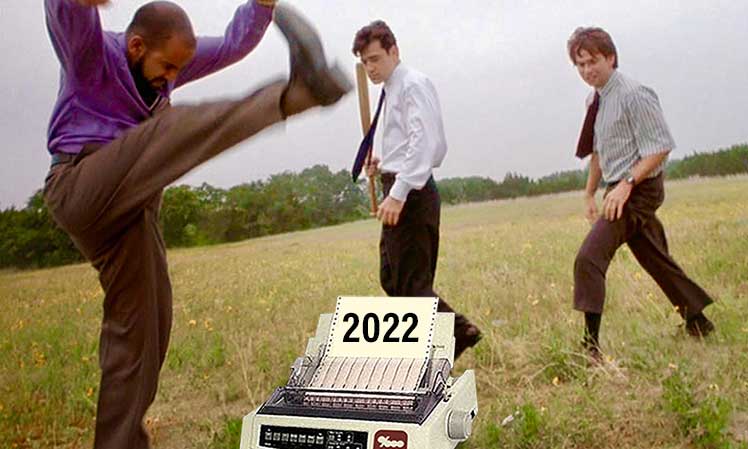
The corporate management world is melting down over a new Gallup report. A survey conducted in June of 15,000 U.S. workers found that only 32% of them give a damn. Meanwhile, over 50% of the workforce are ‘quiet quitters’.(1)
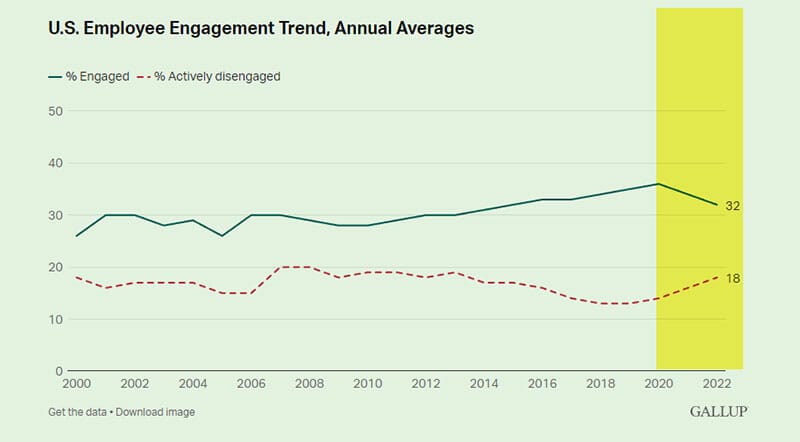
The new silent majority are mentally checked out. They go through the motions and do the bare minimum to keep collecting paychecks. It’s an invisible menace that’s shaken the foundations of traditional office hierarchy.
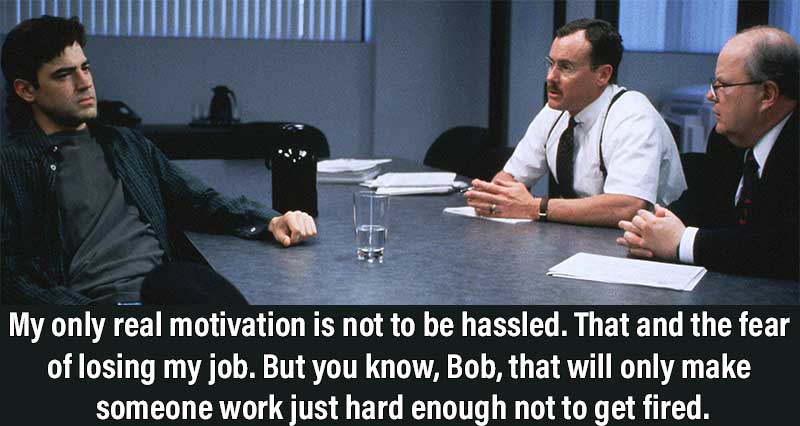
For decades, ‘going the extra mile’ at work was the standard way to impress bosses and earn promotions. Most workplaces use this as a benchmark for manager expectations and worker performance.
However, when the world locked down to work from home in 2020, the corporate performance paradigm began to crack. Two years later, more than half of the American workforce has mentally checked out.
Quiet Quitting Timeline
This section tracks a perceptual shift among corporate employees from 2019-2022. Environmental perception studies how people sense, process, and act on perceived stimuli.
The ‘environment’ is the reality around us in which we live and act. ‘Cognition’ describes people’s understanding of their environment. It happens by blending immediate sensory experiences with past memories(2).
When the world locked down to work from home in 2020, environmental perceptions clashed with cognitive ones. Chaos ensued.
- 2019 – Pavlovian Rewards: to reward workers, managers shunned cash incentives for positive affirmations, donuts, and gift cards.
- 2019 – App Notification Overload: motivational management schemes hammered staff with 100+ notification pings per day.
- 2020 – Ergonomic Illiteracy: when millions shifted to working from home, corporate management wasn’t qualified to support them.
- 2020 – Technostress Zoom Purgatory: managers went overboard trying to ‘manage’. That exacerbated employee burnout.
- 2020 – Gaming Chairs Go Mainstream: many gave up on corporate support to build their own ergonomic workstations.
- 2021 – Great Resignation: when lockdowns ended, resignations skyrocketed. Suddenly-redundant middle managers led the exodus.
- 2022 – Quiet Quitters Become The Majority: more than half of the workforce now does the bare minimum to ensure a paycheck.
2019: Cash Incentives Replaced With Praise
Trending in 2019 management circles was the idea that workers don’t like cash incentives. According to Harvard Business School, rewarding workers with cash would make them ‘obesessed’ about money(3).
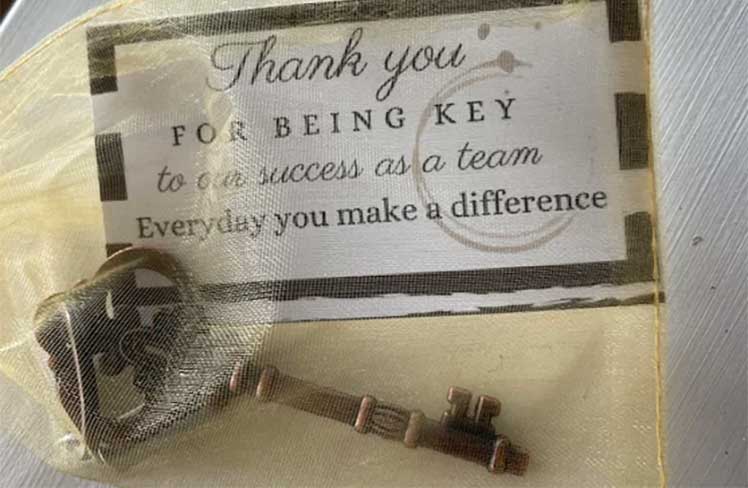
Harvard business pundits also warned that most employees would ‘waste’ cash rewards on necessities like rent and groceries. By using a Pavlovian model, savvy managers could instead give rewards that boost motivation.

For example, instead of impersonal cash, every worker loves to receive praise for doing good work. Harvard experts also tout gift cards as hyper-motivational. For instance, giving cash to a fat worker would likely get wasted on their gluttonous habits.
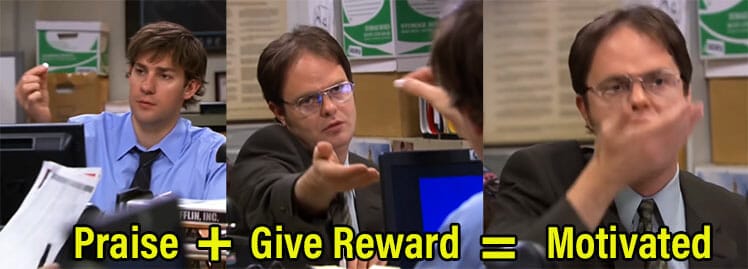
In contrast, a gift card to a store selling workout clothes will inspire them to lose weight. That transformation will create memories worth more than cash!!
2019: Management Notifications Attack
In the 2019 scene, cash rewards went to shareholders. Workers were gifted with praise, coupons, and motivational management techniques. The latter resulted in 2019 becoming a blur of pings and popups from desktop and phone notifications.
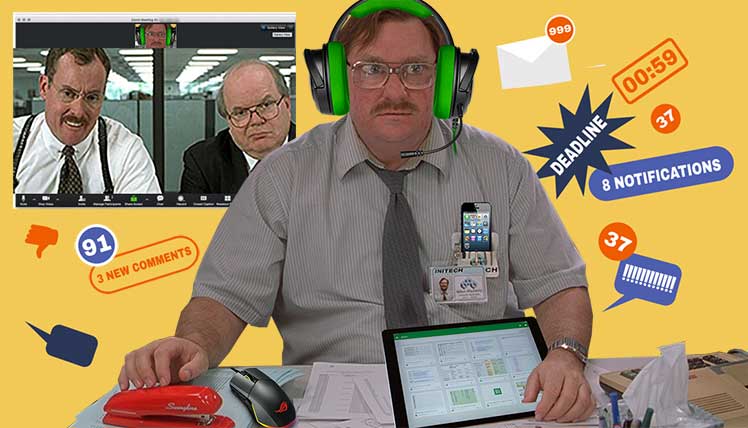
Executives of that era worked in a state of hyper-responsiveness. A typical worker touched their phone 2,617 times a day. They checked their emails 74 times a day and received 46 daily smartphone notifications(4).
In hindsight, this was the antithesis of productivity. When a notification forces you to switch between tasks, it takes around 23 minutes to get back to the task at hand(5).

Multiply 46 daily smartphone notifications by a 23-minute mental delay before resuming one’s task. That equals 1058 minutes (17+ hours) of forced mental downtime — per each 8-hour work day!

This created a perfect set of conditions for middle management to provide its value. More notifications and emails sent out slow productivity. When productivity slows, that becomes proof that workers need more management.
2020 Lockdowns: Poorly-Equipped Workers
During the Covid lockdowns of 2020, corporate leadership was unprepared to equip staff for healthy home computing. For instance, a study of U. of Cincinnati faculty found that most were sent home with only a laptop.
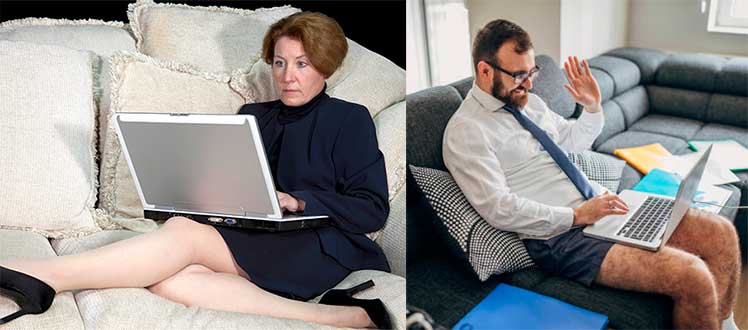
Many worked full-time on sofas or beds. Others used their laptops on kitchen tables. To address potential problems, workers and management were given guidelines for healthy home computing.
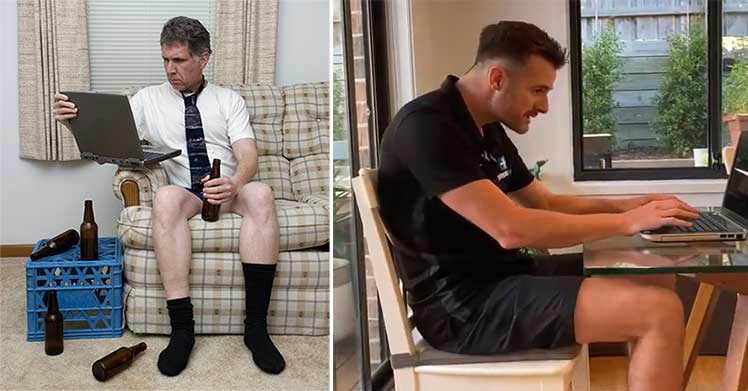
Five months later, the majority of both groups had failed to adapt. As a result, 62% reported suffering from moderate to severe pain in the upper back and shoulders. 49% ensured stiff neck pains and pounding headaches.
2020: Excess Technostress & Zoom Meetings
Working full-time on a computer without ergonomic support is exhausting. Imbalanced posture stresses body parts not meant to bear weight. That burns more energy than usual, leading to perpetual fatigue.
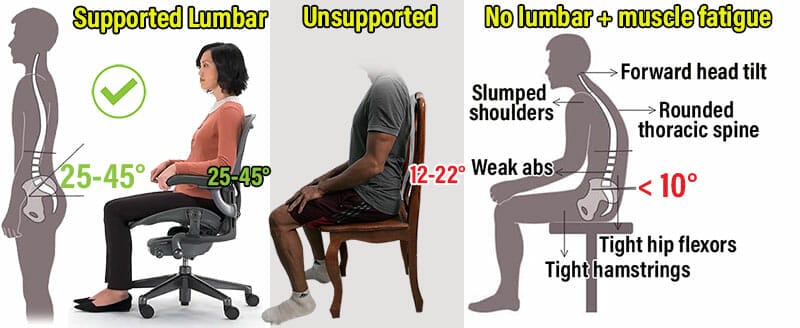
Over time, chronic fatigue wears down joints and ligaments. That leads to bigger imbalances that force the body to work even harder.

During lockdowns, as WFH staff struggled with back pain and fatigue, they were also getting battered by more apps and notifications than ever before!

To bridge distances, managers blasted sore, tired staff with emails and notifications on both PC and mobile apps(6). Each day became a blur of non-stop pings from groupware, workflow, chat, and conferencing app notifications.
2020: Gaming Chairs Go Mainstream
Knowledge about healthy sitting first emerged from NASA research in the 1970s. Even so, as the computing era unfolded, many offices maintained ancient seating standards.

This earned office furniture companies billions each year in fat profits. Providing schools and offices with cheap, rugged, furniture was easy money. But when lockdowns hit in 2020, this strategy backfired.
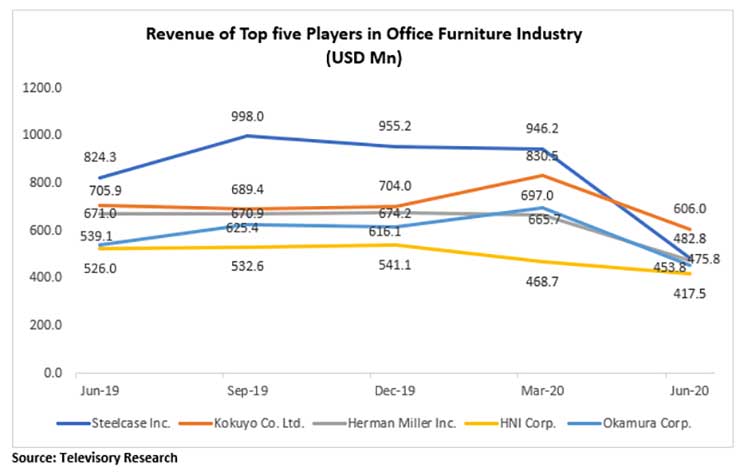
When lockdowns hit, office space closures crashed B2B office furniture sales. At the same time, consumer demand for ergonomic furniture had skyrocketed. With no help from management, ill-equipped WFH staff searched online for help.
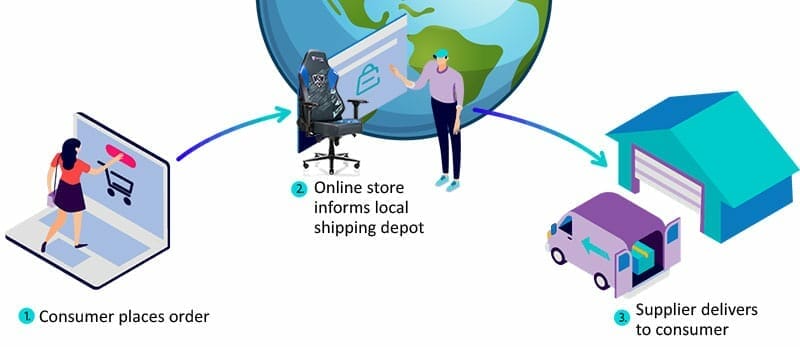
There, they found a well-developed gaming chair industry. Since 2006, this industry has been selling almost exclusively online. As a result, when lockdowns hit, B2B furniture sales crashed.
Gaming Chair B2B Sales Skyrocket
While lockdown office chair sales crashed, many B2C gaming chair companies broke sales records.
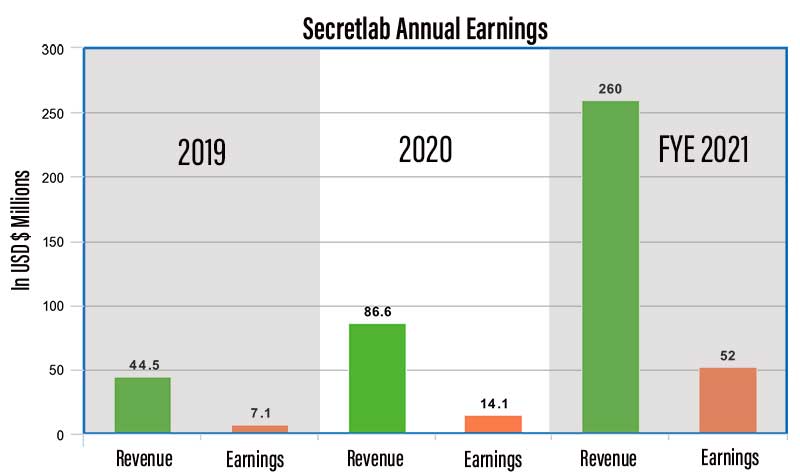
Gaming chairs skyrocketing into the mainstream achieved two things. First, under B2B conditions, ‘ergonomics’ has long been hyped as vague and complex high technology. But to appease mainstream audiences, gaming chair ‘ergonomics’ has been drastically simplified.
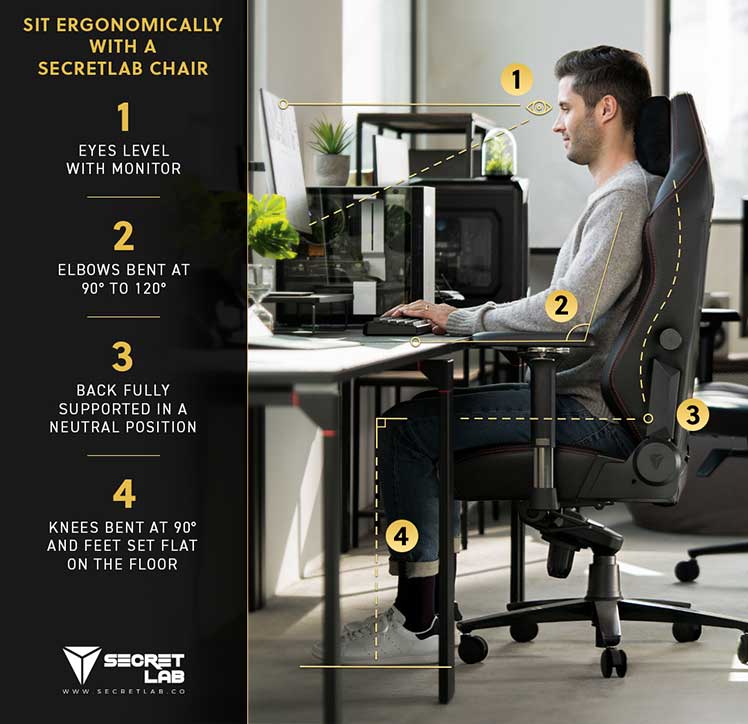
Today, more people are aware that ‘ergonomic’ simply means adjustable. To ensure good back support while computing, a chair should have adjustable lumbar support, adjustable arms, and a reclining backrest.
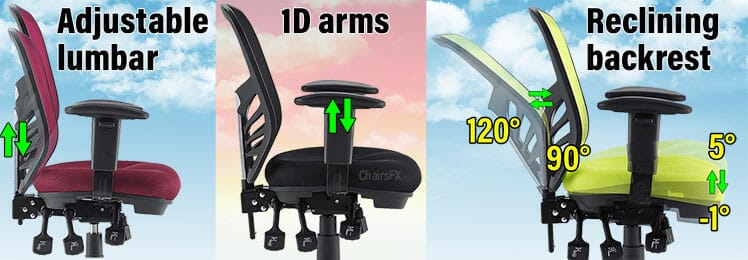
Second, work-from-home staff learned to rely less on their managers for WFH support. Instead, many have been able to take inspiration from the healthy desk working habits of today’s esports stars.
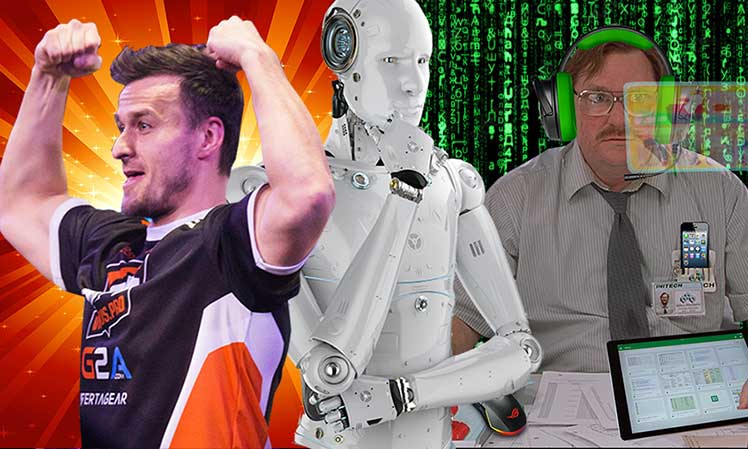
There, the benefits of a healthy desk working routine are well-documented. In that space, today’s top performers prioritize good ergonomics and healthy lifestyles as the key to success. Learn more:
2022 Deskwork Priorities: Fitness + Posture Beats Technostress
2021: Great Resignation
Imagine if a sudden pandemic locks down the entire planet. In a rush, your boss sends you to work from home with only a laptop. As you hunch your aching spine in a wooden dining chair, your laptop and phone pop off with notifications.

Some survived this torture by going beyond their management for support. Ergonomic furniture sales kicked off. For usage inspiration, pro esports gamers and streamers have made healthy computing ubiquitous.
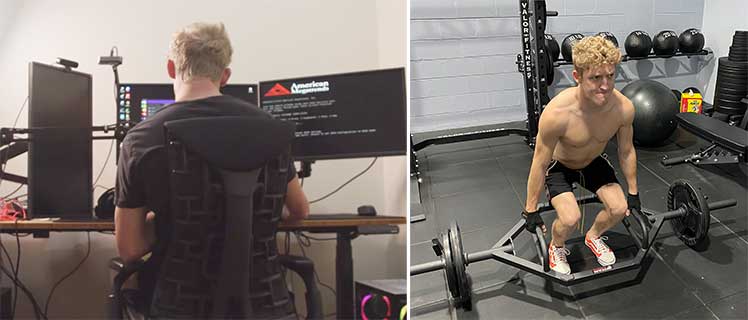
Next, imagine reaching a healthy home working routine, only to get called back to the office — a dreary proposition! This may explain why when lockdowns ended, 47 million people chose to quit rather than return.
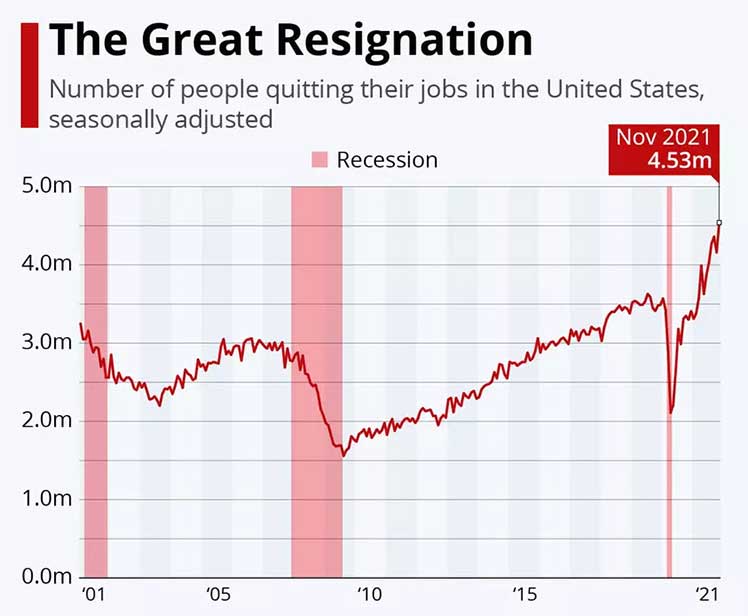
When lockdowns ended in late 2021, 3% of the U.S. workforce (47 million people) quit their jobs. Data suggested that even cold cash bonuses weren’t luring people back. Instead, Gen Z and younger generations were now prioritizing work-life balance and personal wellbeing(7) over ‘going the extra mile’ for their masters.
Corporate Great Resignation Solutions
To address the mass exodus, corporate management responded with the tone-deaf clumsiness they are famous for. Most major ‘studies’ on worker stress had no theoretical framework or preventive aims.
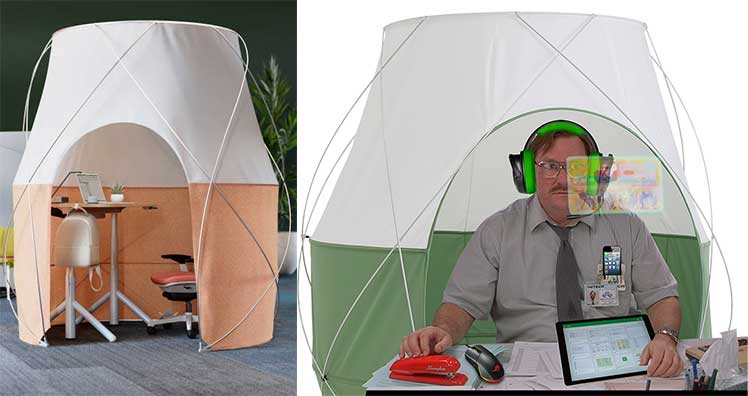
For example, to boost work happiness, Steelcase rolled out desk tents — with no theoretical framework or preventive aims. The sales pitch: “Tents inherently make you feel comfortable and safe when you’re inside of them.”

Workers were gifted tents, donuts, pizza parties, coupons, and positive affirmations galore. But no matter how much was gifted, the sour taste of modern corporate culture never abated. Instead, it mutated into what horrified managers call ‘an invisible menace’.
2022: Quiet Quitters Become The Majority
The good news in 2022 is that the Great Resignation has ended. The bad news: instead of quitting, people are mentally checking out. They do just enough to not get fired and wait for payday.
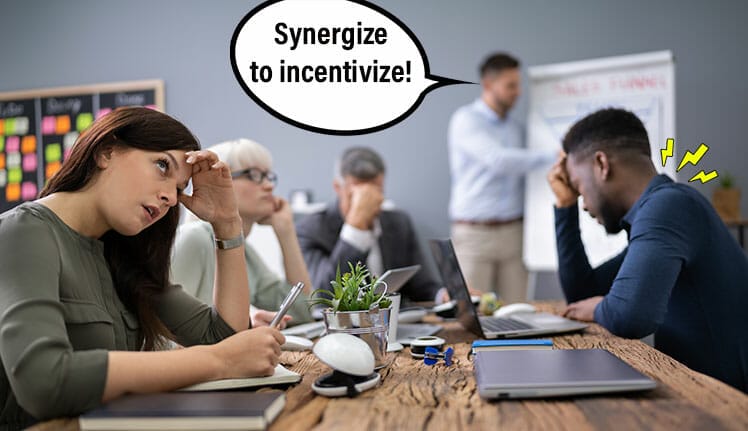
According to the Gallup Poll(1), in the 2nd quarter of 2022, only 32% of workers were actively engaged with their jobs. Meanwhile, the level of actively disengaged increased to 18%. The ratio of engaged to actively disengaged is now 1.8 to 1 — the lowest in a decade.

Those disengaged cited vague expectations, few opportunities to learn, and a disconnect with a company’s mission as big turnoffs.

Meanwhile, a growing class of ‘Loud Quitters’ are using their crappy jobs to kickstart Tiktok careers. Many Gen Z and younger millennials under 35 meander through their days by making anti-work memes. At present, the #quietquitting Tiktok hashtag has 146 million views!
Healthy Ergonomics For Desk Workers
The quiet quitter trend shows collective resistance against corporate work cultures. This pulls the veil off a scheme that’s been steadily simmering for over a century.

Since the late 1800s, corporate office cultures have been cutting corners on human wellness factors. Instead of giving workers the tools to succeed, they pressured them into working ‘harder’.
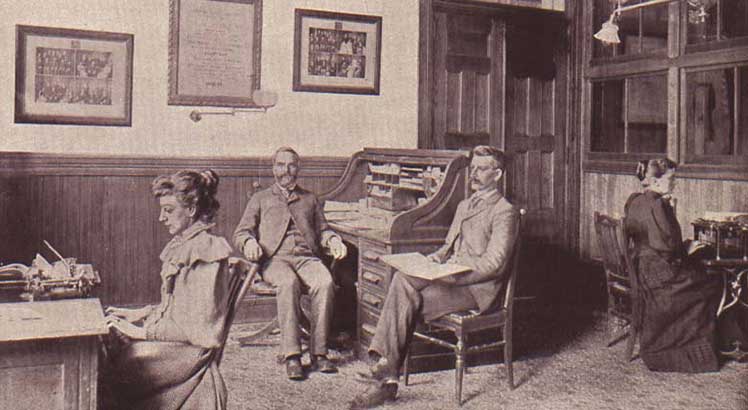
Today, more people are waking up to a stark reality. Giving unlimited time and energy to your job will degrade your physical and mental health!
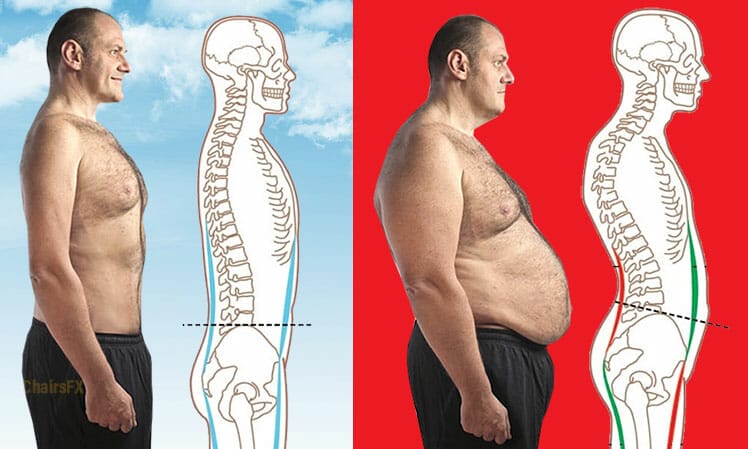
If cold, hard, cash incentives are the reward, some may feel tempted to sacrifice their wellness for corporate goals. But if the only rewards are donuts and pep talks, there’s no logical reason to destroy one’s body and mind except madness.

In sharp contrast to a corporate-inspired spiral to misery, a clear blueprint for healthy, high-productivity computing already exists!

While corporations fumble around with work tents and pizza lunches, top esports streamers and teams share a clear blueprint for healthy, high-productivity computing success. Here’s a summary of the easy fundamentals corporate cultures prefer to ignore:
Physical Support Tools
There’s no mystery about what it takes to operate a computer for 8-10 hours a day for work. From a tangible perspective, the biggest problem is back support.
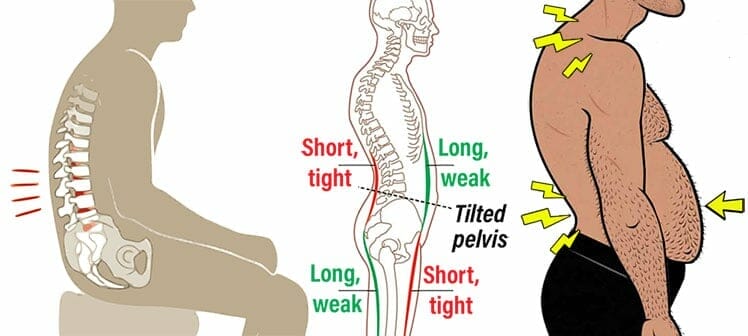
Slouching over a PC all day harms the spine and causes health problems. That saps energy, spiraling workers into a deeper state of malaise.
Most people don’t know: any good ergonomic chair with adjustable lumbar support, adjustable arms, and a reclining backrest can fix these issues.
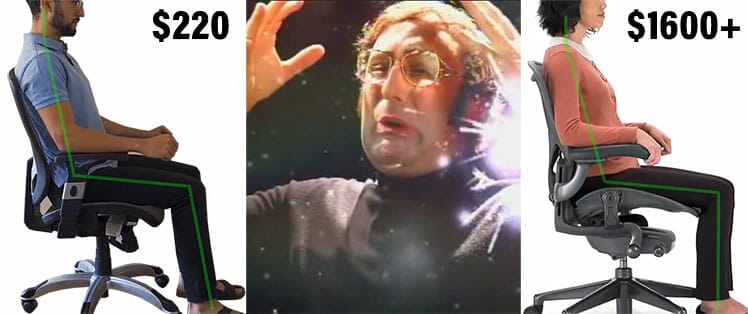
In 2022, good ergonomic support is cheap and easy to buy online. When you spend more than $300 on one, expect luxury extras — but a similar quality of spinal support! So why pay more? Here’s why:

If aesthetics, tactile sensations, and luxury extras aren’t a priority, there’s no reason to pay more. Rock-bottom spinal supporting ergo chairs start at just $150.
Ergonomic Chair + Sit-To-Stand Desk
Beyond a good chair, the average desk worker now spends around 3 hours per day using a mobile phone. Most do so with a severe forward head tilt. Meanwhile, as people spend more time computing, they become less active. Sit-to-stand desks solve both of these issues.
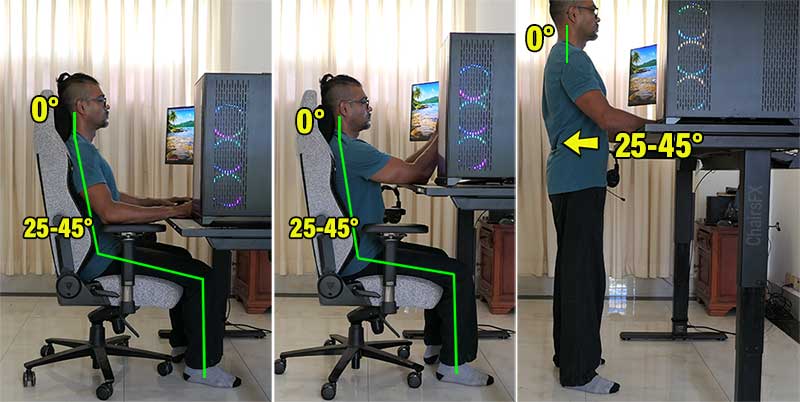
Sit-to-stand desks solve both of these issues. First, toggling the height of the desk provides support for the elbows while mobile computing.

Second, when you shift between sitting and standing positions, you’re replicating a squat. Every time a person squats, they’re working their legs, hips, spine, and shoulder muscles. This provides a jolt of energy and a nice circulation boost.
By stacking a good ergonomic chair with a good standing desk, you’ve got all the ergonomic tools you need for healthy multi-device computing! Learn more:
Psychological Support Tools
Ergonomists define comfort as environmental factors which improve physical or psychological wellness(8). Psychological wellness comes from serving unique human needs.
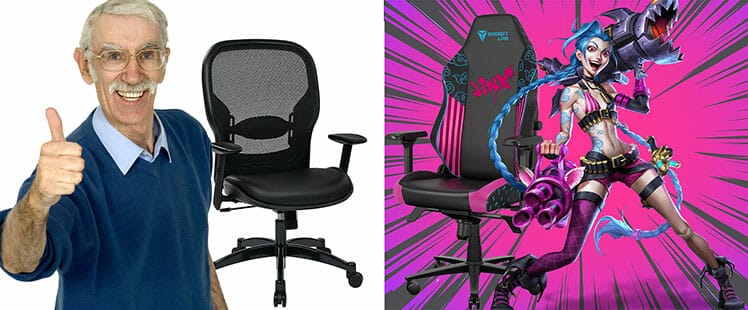
A Herman Miller report justifies the gorgeous aesthetics of its chairs for psych reasons(9). Those able to personalize and prettify their workspace enjoy a greater sense of ease, well-being, and comfort.
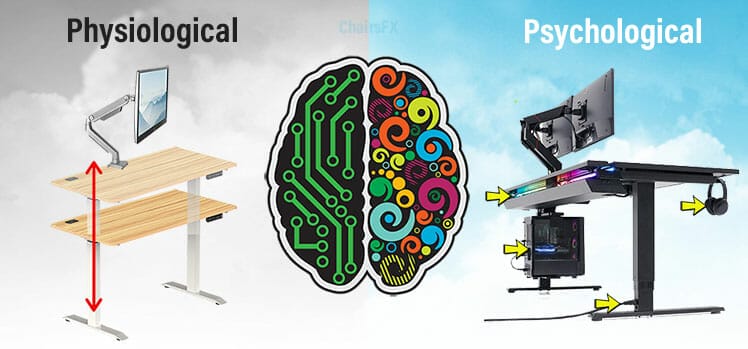
According to the report, worker comfort directly affects important predictors of operational efficiency. These include productivity, job satisfaction, retention, well-being, and worker health.
Therefore, it makes sense to approach comfort from a holistic perspective. That means attending to the factors that make people comfortable while computing.
Appealing Furniture Eases Lockdown Blues
When locked down in a small space for long periods, dull furniture can make the user feel the same way. Many people learned the hard way that price and functionality are not the only ergonomic workstation factors to consider.
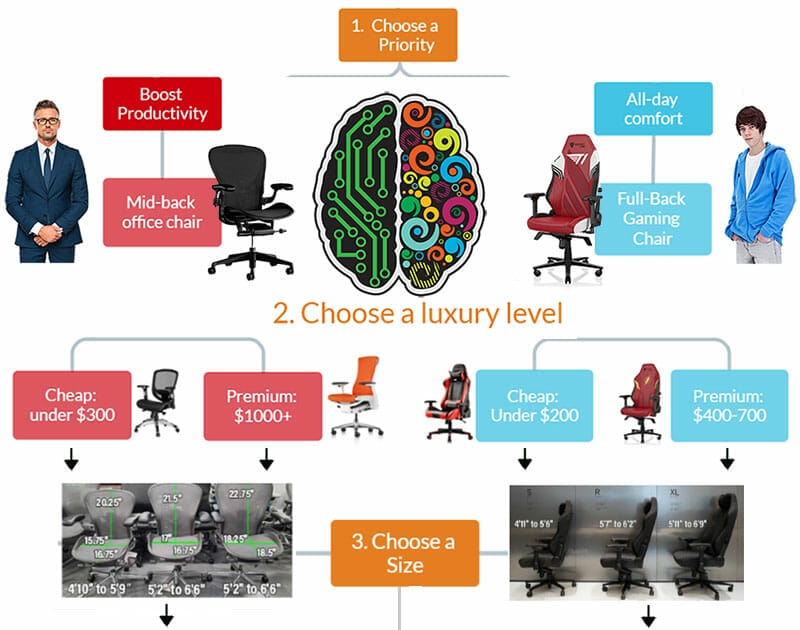
Beyond good back support, high-end chairs from Secretlab, Herman Miller, and other top brands add stunning aesthetics. The psychological comfort that sweet aesthetics provide is a big reason people pay more. Learn why splashing out for luxury is worth it — for some people:
Physical Fitness Opportunities
It’s well-known in pro esports that players who are rested and comfortable perform better. In fact, many top esports doctors tout movement and exercise as more important than ergonomic furniture!

For regular folks, the U.S. Department of Health and Human Services (HHS) puts out clear activity guidelines. Its most recent are designed to boost general health and productivity.
- Children 3-5: should be physically active all day. Caregivers should encourage play across several physical activities.
- Children 6-17: 60 minutes of moderate-to-vigorous physical activity per day. Add muscle-strengthening activity 3 times weekly.
- Adults: focus on spending less time sitting. Add 2.5 to 5 hours of moderate-intensity exercise per week.
Adhering to these guidelines should yield these benefits:
| Outcome | Adults | Children 6-17 |
| Cognition | Improved functioning, attention, memory, and processing speed. Reduces dementia risks. | (Ages 6-13) Improved memory, processing speed, and academic performance. |
| Mood | Reduces depression risks | Reduces (non-disorder) short and long-term anxieties. |
| Physical Health | Risk reduction: all-cause mortality, diabetes, hypertension, anxiety, weight gain, bone health, depression. | Improved bone health, weight status, muscular fitness, and cognition. |
Warning: failing to meet these guidelines will also yield negative effects:
- Wrist disorders: 4 million Americans suffer from carpal tunnel syndrome.
- Neck pain: the fourth-leading cause of disability in America.
- Shoulder pain: causes around 4.5 million USA doctor visits and $3 billion in associated health costs.
- Elbow and forearm pain: 1-3% of all Americans suffer from elbow tendonitis, aka tennis elbow.
- Low back disorders: 31 million Americans are suffering from low back pain at any given time.
Self-Determined Work Pace
Physically clocking in for an 8-hour shift doesn’t guarantee 8 hours of full engagement. In fact, many studies show that the brain works best in 90-minute intervals.
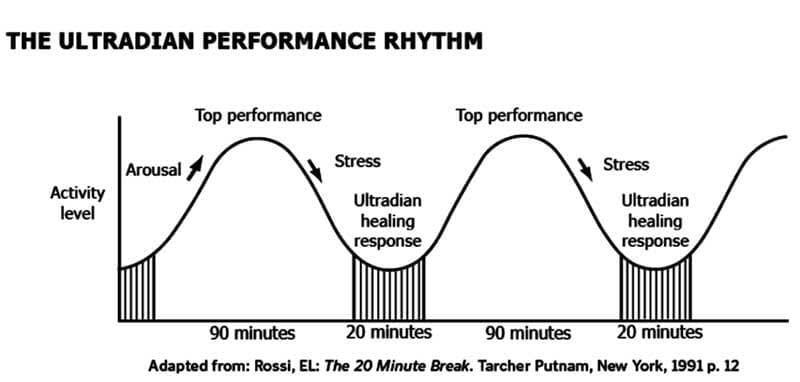
Between blocks of intense work, the brain also needs processing downtime. Taking a break between work bursts puts the brain into ‘diffuse mode’. This is a relaxed, dreamlike state that focuses on the self rather than the external world.

Power naps can take diffuse mode brain benefits even further. That gives the brain plenty of time to ponder, strategize, and store the previous work chunk. When the user returns to their desk for another work burst, they’ll enjoy sharper concentration and improved processing power(10).
Productivity Improves While Working From Home
Several studies have shown that when freed to WFH at their own pace, productivity improves. On average, those who work from home are 47% more productive(11). One survey found 30% able to do more work in less time.

A detailed survey from Prodoscore found that WFH productivity increased by 47% since March 2020. Workers were at their most productive between 10:30 am to 3 pm. From Tuesdays to Thursdays, productivity was the highest. On Mondays and Fridays, workers eased down.
Takeaway: Redundant Middle Management
Between early 2020 and mid-2022, a veil was lifted on corporate hierarchies. As the masses shifted to working from home, middle management’s role in the production process was exposed.

Three major failures stood out:
- Ergonomically illiterate: most managers know less about healthy deskwork than teenaged Fortnite gamers.
- Intrusive: studies have proven that workers perform better when left alone. In contrast, each management notification sent out delays production by 23 minutes!
- Unhelpful: ‘motivating’ workers with donuts and positive affirmations is embarrassing.
Given these post-lockdown realities, BusinessInsider has proclaimed it “time to get rid of managers. All of them.” Pre-lockdown, middle management made up 17.6% of the U.S. workforce.

Traditionally, they get paid large salaries to act as “workplace hall monitors”: keeping an eye on the workers. But as employees shifted to WFH, the need for this oversight evaporated.
That explains why middle managers drove the Great Resignation exodus. Around 37% fled the post-lockdown scene(11). Tech CEO Paola Carranco saw many managers struggle while trying to lead in the WFH era.

“Managers that try to manage the old way… will have to deal with the consequences. New managers must embrace the new world of work by being agile, inclusive, genuinely caring for their people, but most of all, being human.”
Conclusion: Quiet Quitting Solution
In theory, ergonomic science should equip users to perform tasks with peak efficiency. In reality, institutional ergonomists report to corporations, not users. As a result, many genuine human factors have historically been glossed over.

But in mid-2022, over 50% of the workforce is believed to have ‘quietly quit. They’re dispassionate about work and only there for the pay. To rekindle those lost passions, physical + cognitive ergonomic science already has the answers.
- Physical support: a healthy workstation should support good back and neck posture while sitting, standing, and mobile computing.
- Psychological support: the ability to customize one’s workspace and set their own boundaries improves productivity, job satisfaction, well-being, and health.
- Movement + fitness: frequent movement while computing boosts energy and focus. Those physically fit also gain improved memory and cognitive processing power.
- Self-determined work pace: the human brain performs best in short bursts. Structuring work and breaks around this concept gets more work done in less time.
The quiet quitting movement isn’t organized, but a reflection of the working collective’s sentiment. An obvious solution exists: go with the flow. One simple policy change from our corporate overlords would set off a chain reaction that solves quiet quitter malaise.

The solution: make work-from-home permanent. That would speed up the exodus of redundant middle managers. Then, use the savings of a trimmed management class to outfit remote staff with proper equipment.

With fewer managers around, remote staff can dictate their own workflows. That buys corporations time and resources to develop lean, agile, modern management teams. To support permanent WFH, they can enhance production with adaptive strategies. Everybody wins:
- Employees: gain physical & psychological support; trusted to work at their own pace.
- Managers: learn new skills that spread happiness, passion, and genuine loyalty.
- Corporations: increase productivity, cut infrastructure and salary costs, boost morale.
Footnotes
- Jim Harter, ‘Is Quiet Quitting Real?’, Workplace, September 6, 2022. https://www.gallup.com/workplace/398306/quiet-quitting-real.aspx, (accessed 25 August 2022).
- TeachersCollegesj. ‘What are environmental perceptions?’, Trendy, July 2, 2020. https://teacherscollegesj.org/what-are-environmental-perceptions/, (accessed 25 August 2022).
- Dina Gerdman, ‘Forget Cash. Here Are Better Ways to Motivate Employees’, Research & Ideas, January 28, 2019. https://hbr.org/2019/03/stop-letting-push-notifications-ruin-your-productivity, (accessed 25 August 2022).
- Steve Glaveski, ‘Stop Letting Push Notifications Ruin Your Productivity’, Personal Productivity, March 18, 2019. https://hbswk.hbs.edu/item/forget-cash-here-are-better-ways-to-motivate-employees, (accessed 25 August 2022).
- Gloria Mar, et al. ‘The cost of interrupted work: More speed and stress’. 2008 Conference on Human Factors in Computing Systems, CHI 2008, 2008, Florence, Italy, April 5-10, 2008. DOI: 10.1145/1357054.1357072, (accessed 25 August 2022).
- Ludivine Martin, et al. ‘Digitally transformed home office impacts on job satisfaction’. Journal of International Affairs, 2019, https://journals.plos.org/plosone/article?id=10.1371/journal.pone.0265131, (accessed 25 August 2022).
- Chris Parke. ‘Insert reason for leaving: Unpacking ‘The Great Resignation’’, https://www.thehrdirector.com/features/diversity-and-equality/insert-reason-for-leaving-unpacking-the-great-resignation/, (accessed 4 April 2022).
- Martina Lorenzino, et al. ‘The Importance of Psychophysiological Factors in Comfort Studies’. Journal of Ergonomics, S1:001, February 15, 2021. DOI: 10.35248/2165-7556.21.s1.001 (accessed 2 August 2022).
- Herman Miller. ‘Home Sweet Office: Comfort in the Workplace’. 2008 Herman Miller, Inc. Comfort in the Workplace (PDF) (accessed 2 August 2022).
- Steve Connor. ‘Afternoon naps boost brain power and memory, study finds’. Science, February 22, 2010. https://www.independent.co.uk/news/science/afternoon-naps-boost-brain-power-and-memory-study-finds-1906479.html (accessed 2 August 2022).
- ‘Surprising Work From Home Productivity Statistics’. September 13, 2022. https://www.apollotechnical.com/working-from-home-productivity-statistics/ (accessed 2 August 2022).
- ‘Why is Middle Management Leading the Great Resignation?’ January 25, 2022. https://www.myshortlister.com/insights/why-is-middle-management-leading-the-great-resignation (accessed 2 August 2022).




